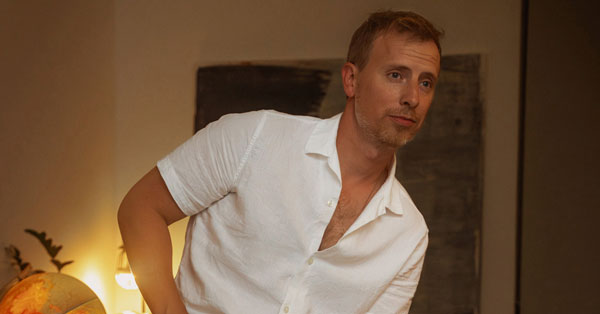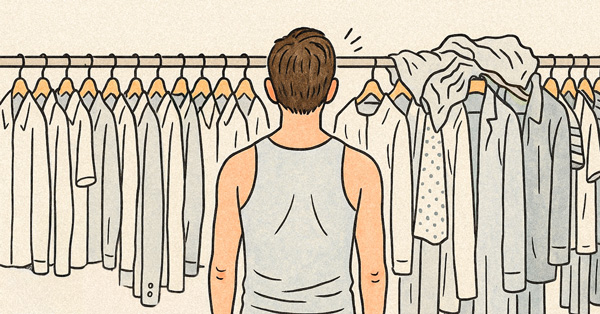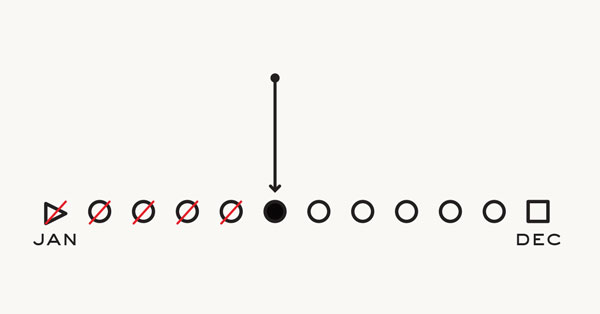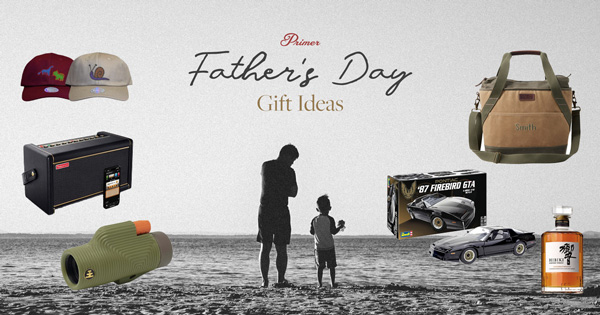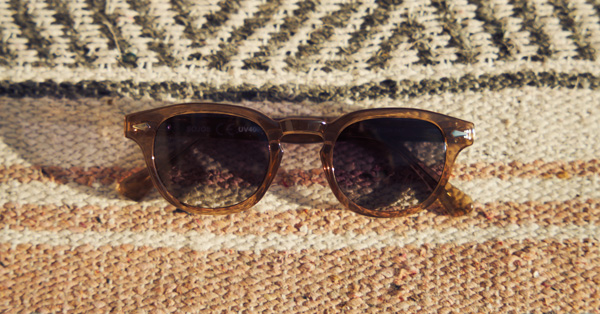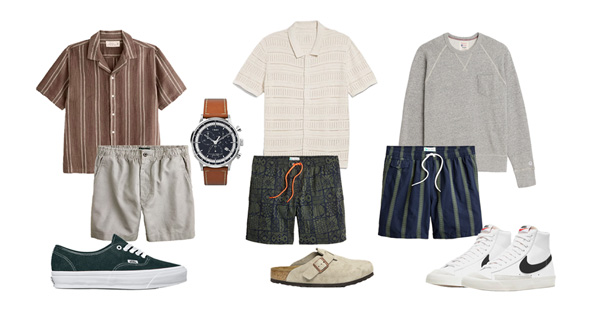If books, travel mementos, and collector memorabilia are an important part of your life, your bookshelves are the perfect spot to reflect and showcase these passions. In this handy how-to guide,I’ll share tips on styling your bookshelves to display your books and favorite items, and turn your bookshelves into a key decorative feature in your home.
The following bookshelf style tips are recommended by decorating professionals, but you may or may not choose to incorporate them all, whether due to space, decor preference, or simply budget. Play around with what works best for you!
Bonus: Stick around until the end to see how I use these style tips in my own home on my family’s tiny, overstuffed bookshelf!
Tip #1: Use a consistent color scheme for your shelves
Look at your current book collection, and note which colors are most prominent. Black, navy, red, yellow, cream, etc.?
Decide which colors you want to emphasize, and play down. Perhaps you’d prefer more earth tones, like brown, cream, dark green, tan, black, etc. Or you want to celebrate your colorful book collection.
When considering your color palette, note that your decor items will need to fit within your chosen theme, which leads us to tip #2
Tip #2: If using decorative items on your shelves, carefully consider which decorative items to use
Some people prefer to use only books to style their bookshelves, but adding some items to your shelves can add visual interest.
First, the best items to use are ones you already own. “Shop” your house before rushing out and buying anything new, as you likely already own items that fit within your color scheme, and also have some sentimental meaning behind them.
If you don’t have any items, or too few, I’d recommend that you wait to collect items for your shelves. When you travel, or have a new experience, or develop a new hobby, you can look for items to take back with you, or create, that will have greater meaning than something you bought at Target on a whim.
You’re looking for items that vary in texture/material. Decide what kinds of materials you’d like to use (perhaps brushed gold, darker woods, stoneware pottery, etc.), and find items that fit within those parameters.
In the example below, notice the brass lighting feature above the shelves, the ceramic pieces, the wood accents (all within the same family of wood color—a medium tone), a pottery vase, a woven basket, a glass cover, and a plant. But, they all fit within a neutral color scheme, so even though the materials are quite different, they complement each other.
Use items that can be “statement” pieces—things that can stand on their own and are visually interesting—and smaller, more “normal” pieces that aren’t necessarily eye-catching, but are consistent with the theme and help reinforce your look.
If possible, leave some shelves to be used only as niches for your statement piece. This draws greater attention to your chosen item, and creates a more finished, thoughtful, and curated look.
Always group your items in odd numbers (1, 3, 5, etc.), and place larger items near the bottom, and smaller items near the top. Vary the heights of items, too, to prevent boring uniformity.
It’s alright to use figurines on your bookshelves, but do so sparingly, as too many figurines can make a bookshelf look like an out-of-place toy box. Consider using figurines that fit within your color scheme, and also add some story or humor to your shelves.
Consider using plants, too. Faux or real depends on your preference, but in general, it’s recommended to place any draping plants, like ivy or pothos, on higher shelves, and smaller, squatty plants, like succulents, on lower shelves.
Tip #3: Arrange your books in different ways
With books, it’s tempting to cram as many onto your shelves as possible, all lined up like little soldiers, but this can look visually uninteresting. The key to better-looking bookshelves is in how you arrange your books.
Heavier books go near the bottom of the shelves, and lighter, smaller books go near the top. This isn’t just a smart idea from the perspective of physics; heavier books on top of a bookshelf give the overall impression the bookshelf is sagging, and about to fall over. Not a stylish, or safe, look!
Also, some books should be put in odd-numbered horizontal stacks (1, 3, 5, maybe 7 books in a stack), and others should be kept upright. It’s up to your preference as to which books should be displayed horizontally or vertically, but play around with different books, and see which ones you like best when grouped together.
For example, a red book, a yellow book, and an orange book all together in a stack might not work for some shelves, but if you’re creating a rainbow look for your shelves—or only one shelf, as in the example below—it could be perfect!
But not all book covers are very pretty on the shelf, right? What to do when some books have bright, glaring colors on their covers, and look out of place?
First, if there’s a book jacket, remove it to see if the book cover underneath is a better color.
Or, you can also flip the book around, so the neutral-colored pages face outward.
This option also works if the majority of your books have darker covers, and your bookshelf is looking a little gloomy. Break up the dark hues with a few books flipped around to show their brighter pages, and it’ll lighten the appearance of your otherwise emo bookshelf.
Lastly, if you’re like me and your bookshelves are shared by the whole family, consider keeping the books the littlest family members enjoy closer to the bottom.
Also, for younger children, don’t be afraid to “cycle” their books. Our toddler has more books than she’s even interested to read, so we curate her selection every now and again, keeping the books she’s still interested in, but swapping out the books she’s become bored with for a fresh selection. These are either new books, or simply old books we had previously put in storage from the last “cycle.”
If you have the space, these Montessori-inspired bookshelves are a lovely, easily-accessible option for your family’s littlest reader.
Using selected style rules from above, here are the before and after results of my family’s bookshelf
Our family loves books, but since we’re not going to live long-term in the country we are currently residing in, we’re careful about which and how many books we own, as shipping heavy books will be expensive!
So, between my and my husband’s book habits, and our toddler’s growing book habit, our humble bookshelf has been pushed to its storage limits. It’s a cluttered mess!
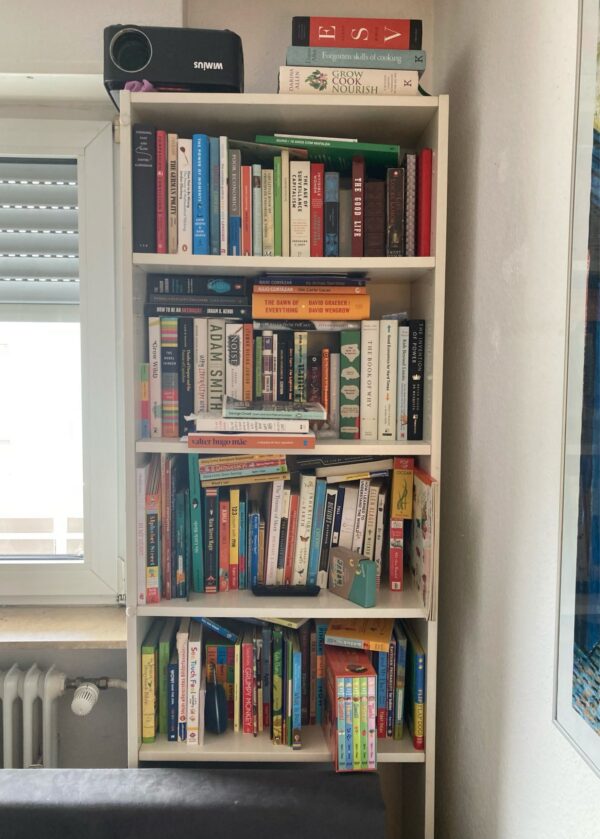
Our toddler’s books were overdue for a “cycling,” and we needed to arrange all of the books more carefully. There would be limited room for tchotchkes, so if I used any, they would need to be smaller, and preferably functional.
Also, we have several books with very “loud” covers that immediately draw your eye. I flipped those around where it made sense, and took the book jackets off where possible.
Finally, I noticed we had some lovely blue and green covers that could be used to create a semblance of a cohesive color scheme for the bookshelf. I moved the heavier books closer to the bottom, and varied things up by creating horizontal stacks of books.
Here’s the final look, which, except for the little succulent up top (which was bought on sale for only 0.69€. Budget win!), was created for free using existing items from around our apartment:
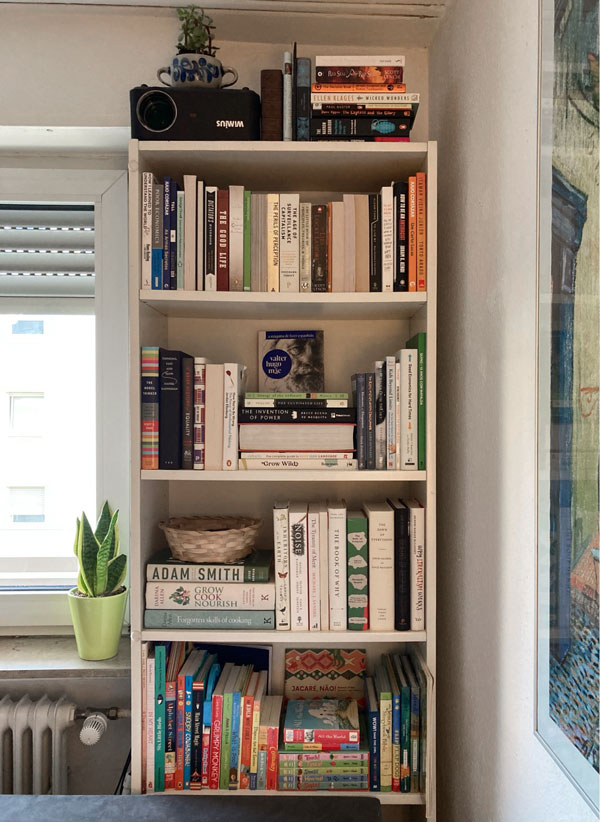
My Brazilian husband will be pleased that Mr. Mãe plays such a critical role in tying our bookshelf’s color scheme together, I’m sure.
The bright-colored basket adds diversity to the materials, and stores our remote controls. Also, the green succulent in the blue Bembel pot draws the eye upward, and echoes the blue and green notes throughout the bookshelf. Plus, the pot is a German souvenir, so it has a story.
(Yes, the styling tips call for smaller plants to be placed near the bottom, but there’s no way that little succulent would survive curious toddler hands, so up to the top it went. 😉
Our daughter’s books were pared down, and then arranged in a way that will hopefully make them more noticeable and accessible to her. I have no expectation that this cutesy arrangement will last long, but it’s good to know her books can fit onto one shelf now :).
Here are the before and after results, side by side:
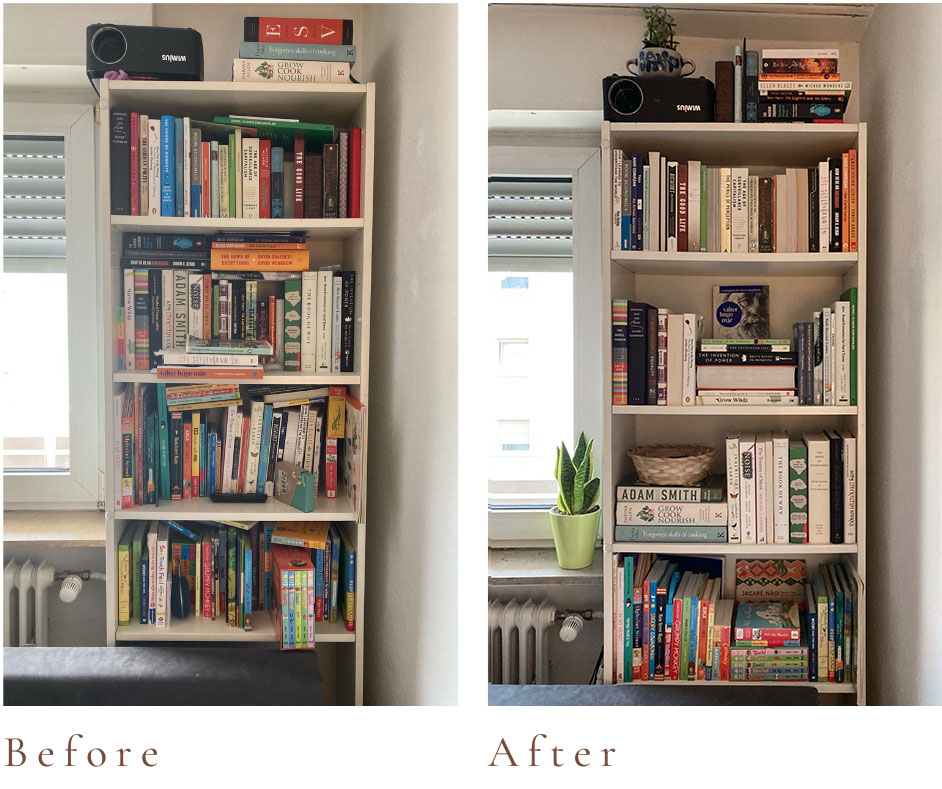
Overall, it’s a more functional, better-looking arrangement for our family and our needs, but what about you? Which styling tips are you planning to try for your own bookshelves?



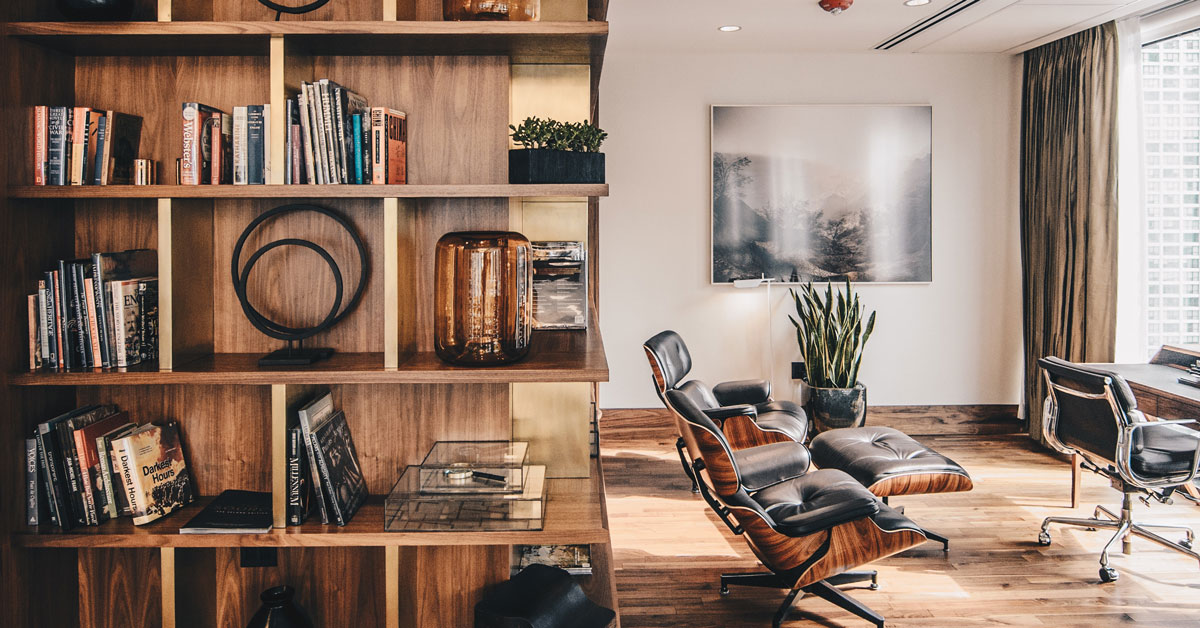
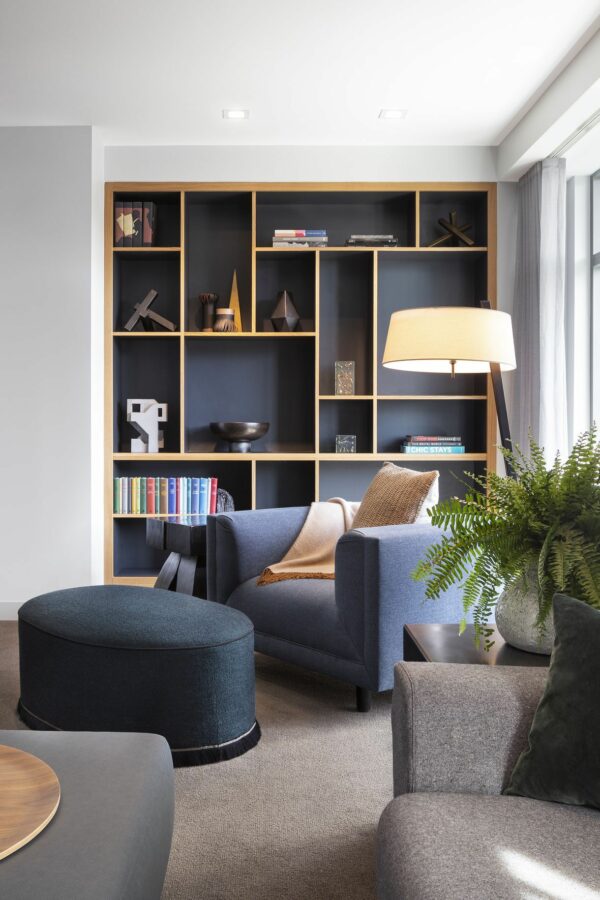
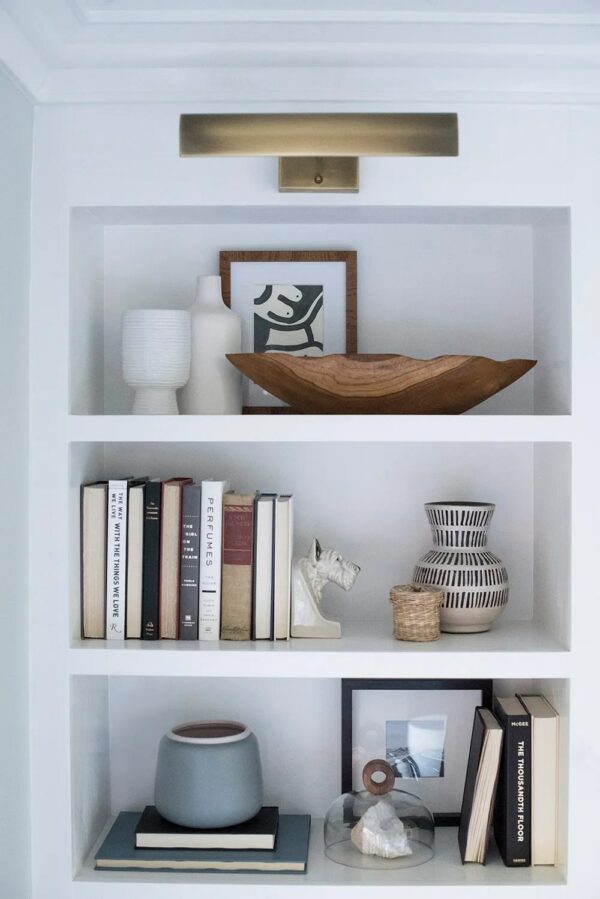
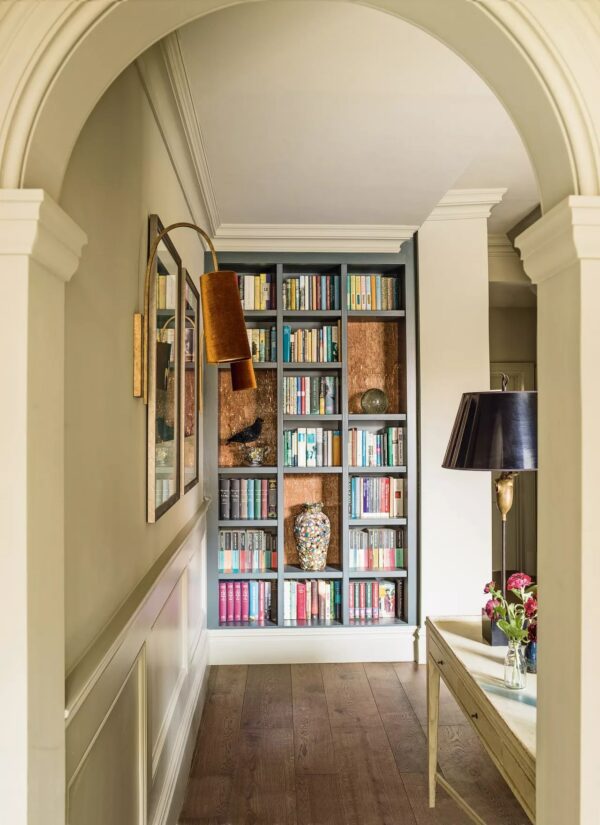
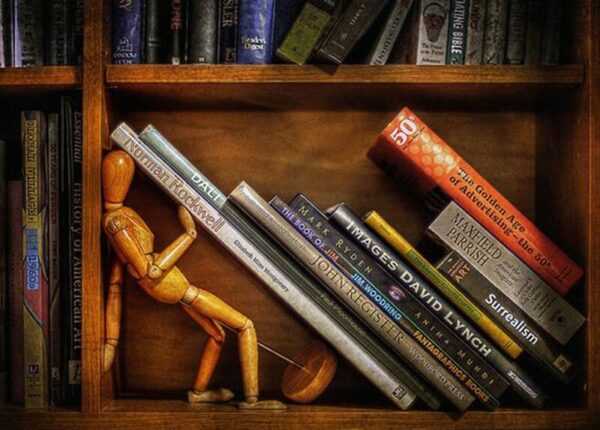
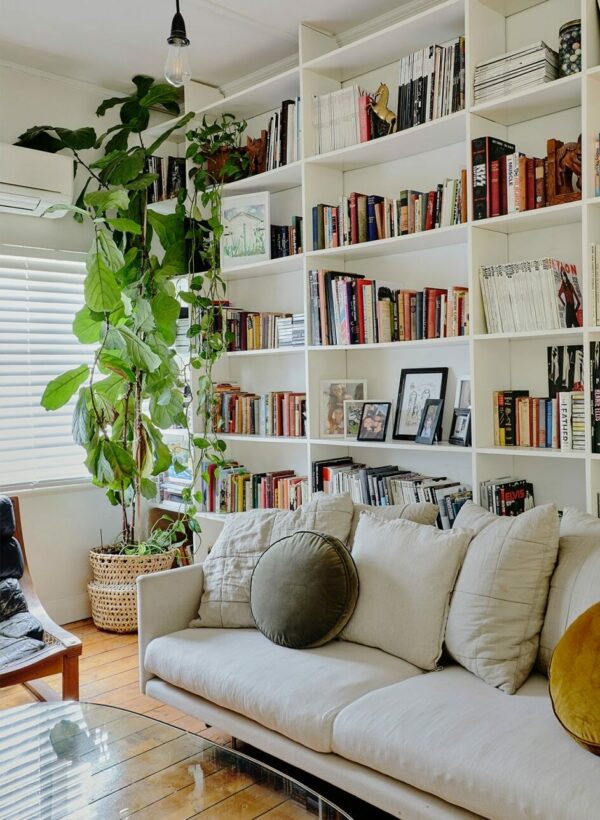
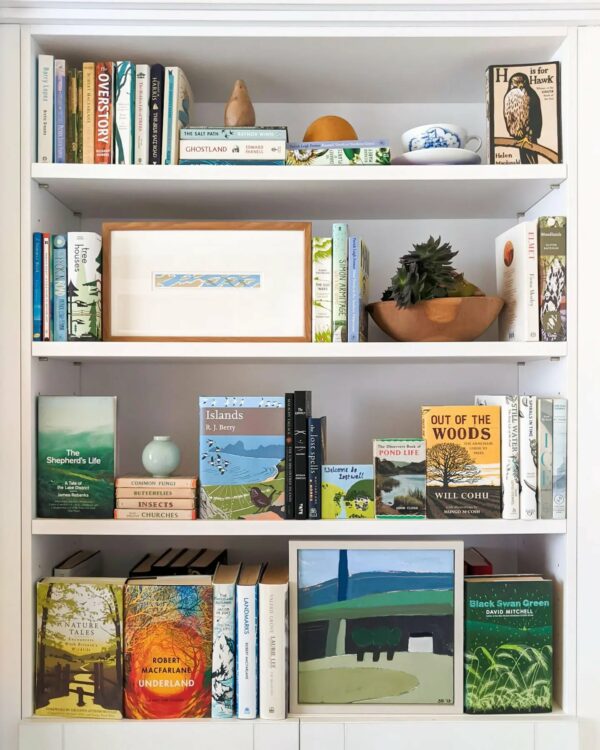
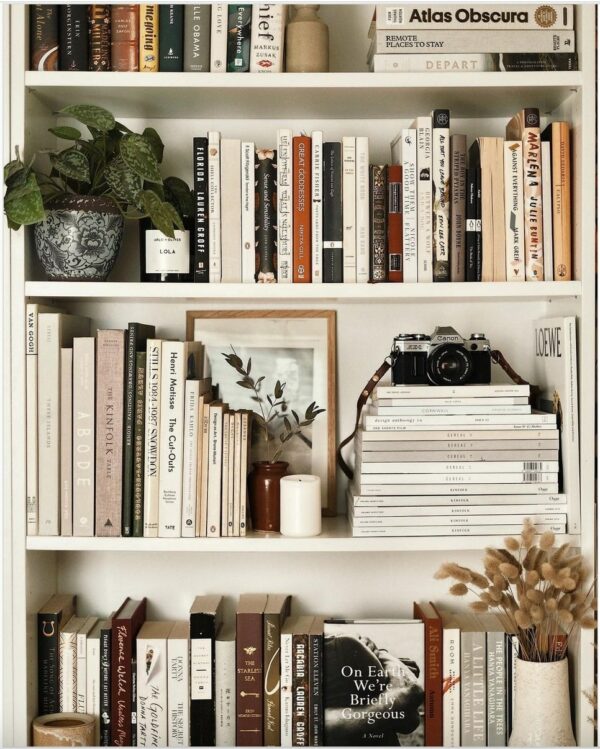
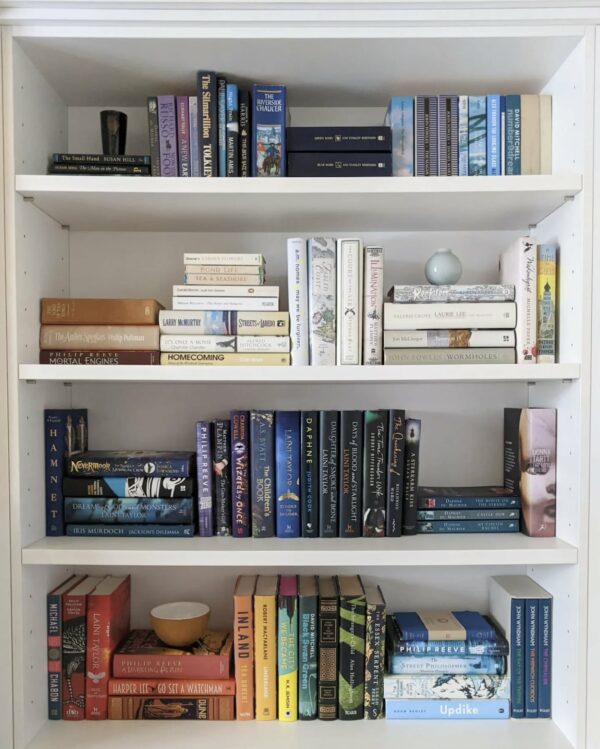
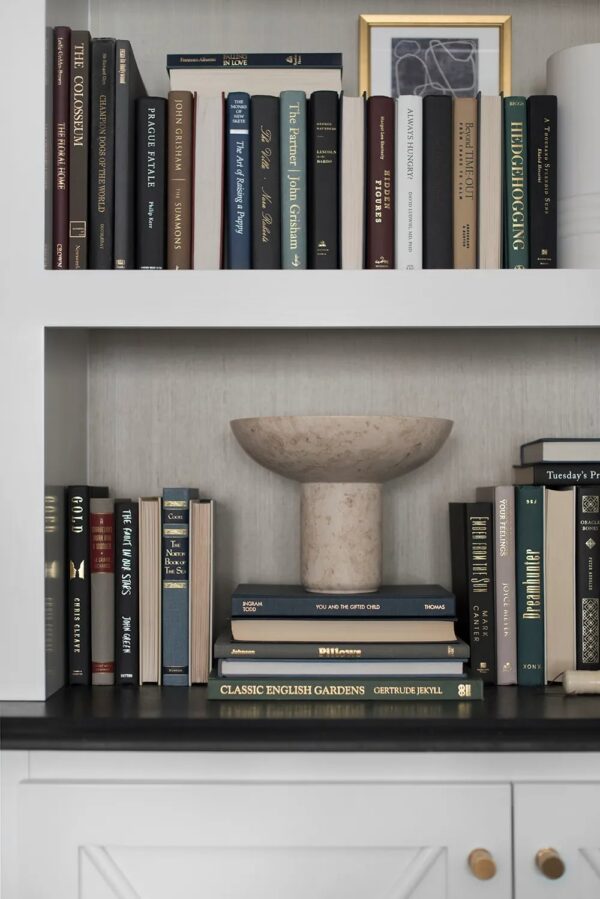
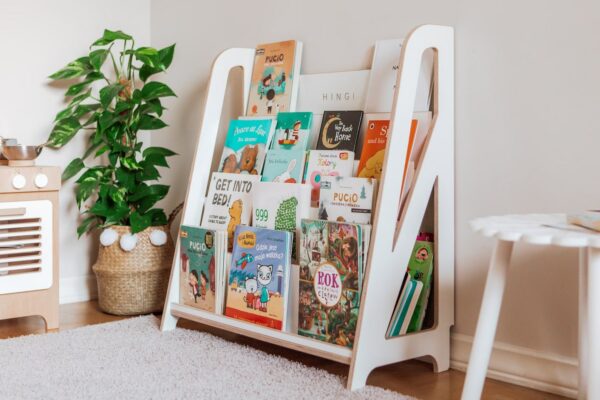
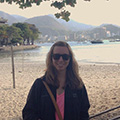
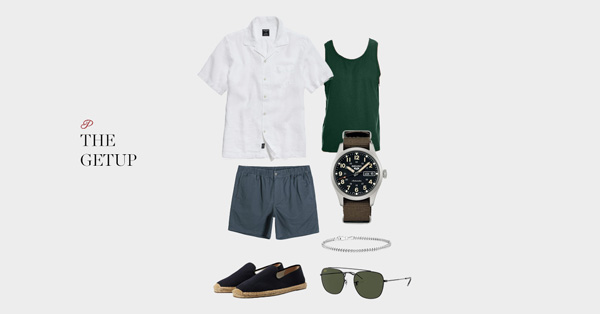

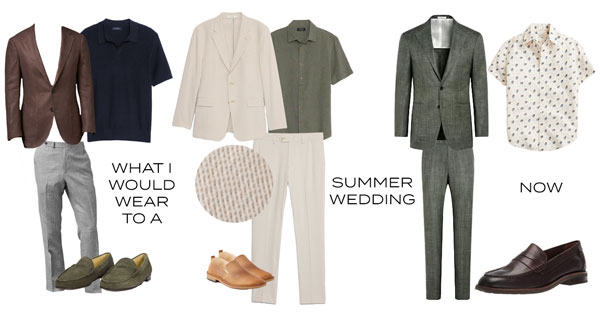
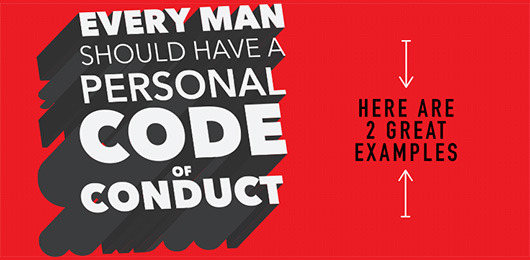
![No, Timeless Style Is Not a Made Up Marketing Term [Essay]](https://www.primermagazine.com/wp-content/uploads/2023/05/timeless-style_feature.jpg)

